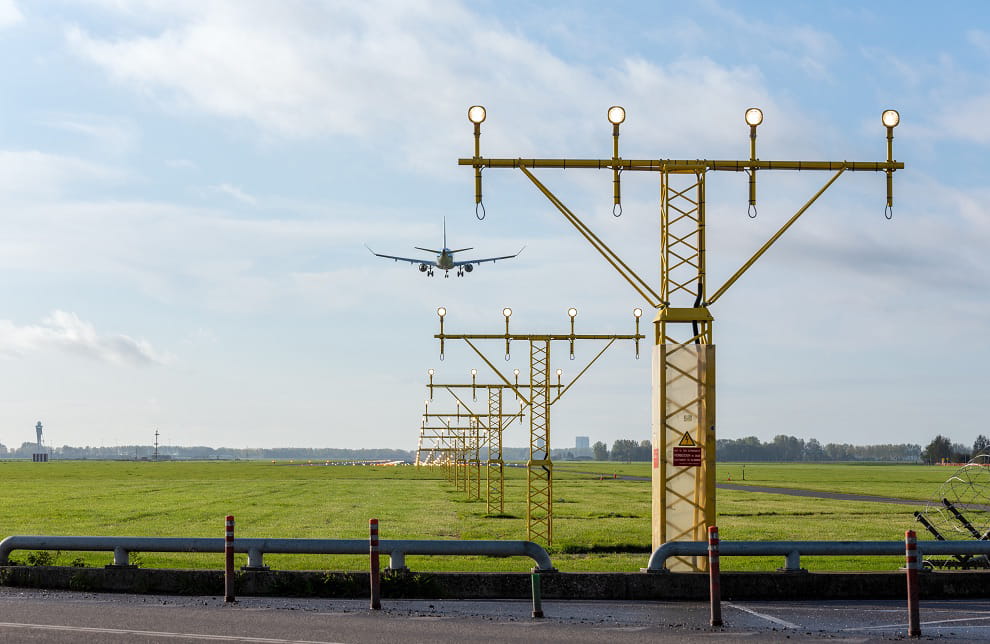Air Traffic Control the Netherlands (LVNL) has introduced an innovative approach system that allows aircraft to safely fly closer together when approaching the runway at Schiphol. As a result, 3 to 6 additional flights per hour can land during strong winds on the runways that cause the least amount of noise nuisance for the local environment. And we are less likely to need the deployment of a second runway for landing.

Published on: 5 April 2023
Maintaining distance more efficiently and based on time
The introduction of the smart approach system involves the implementation of two noise-reducing measures from minderhinderschiphol.nl. These measures are maintaining distance between landing aircraft more efficiently and a time-based approach for maintaining distance when landing. When approaching the runway to land, aircraft must keep enough distance so that the one behind does not encounter the wake turbulence of the one in front.
What is wake turbulence?
Just like ships, planes have a slipstream. These are eddy currents of disturbance in air or water. You can easily see these disturbances in the water in the case of ships, but in the case of aircraft these are only visible when there are water droplets in the air. If an aircraft enters such an eddy current, for example when aircraft fly behind each other towards the runway, it can cause problems. That’s why there are safety guidelines regarding how closely aircraft can fly behind each other. Classification used to be based on weight: heavy, average and light.
New categories
Meanwhile, aircraft have evolved further and we know that speed and wingspan also affect the strength of wake turbulence and how a tailing aircraft reacts to it. LVNL therefore now classifies aircraft more accurately, according to the new six categories of the European wake turbulence guidelines RECAT-EU. This allows for more efficient distribution of safe distances or times between landing aircraft. And as a result, the runway can be better utilised.
Landing and strong winds
Wind also has an impact on maintaining distance. If a plane lands when there’s a strong headwind, they are slowed down and land with less speed. Therefore, a system with set distances between landing planes means that fewer planes can land per hour when there’s a strong wind. With the new approach system, LVNL can direct aircraft to fly at certain time intervals (Time Based Separation) rather than at set distances from each other. This allows the same number of planes per hour to land on one runway in strong winds and reduces the need for a second runway.
You can read more about these innovations in the (Dutch language) press release on LVNL.nl.